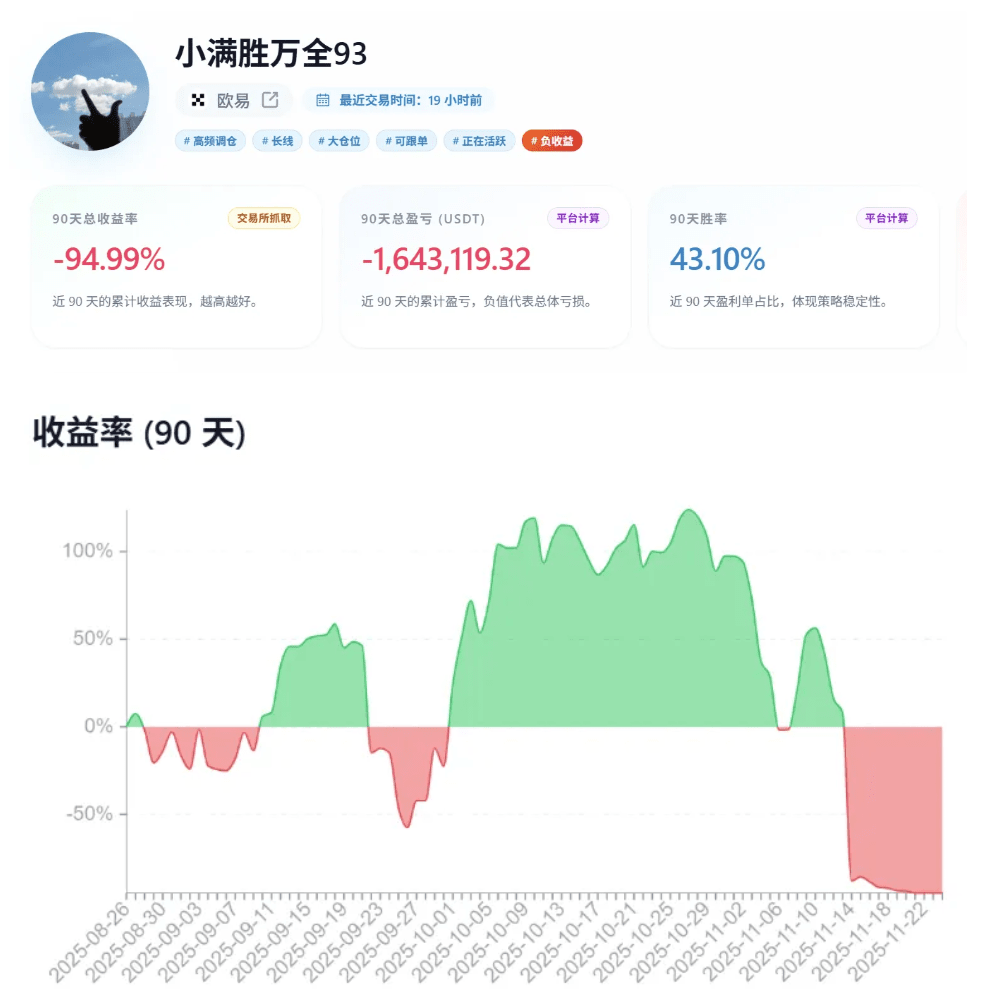
This is a real financial tragedy. A former top trader on the OKX platform, with 1,700 followers, has fallen from a peak return rate of +179% to nearly complete loss at -94.99% within 90 days. Even more shocking is that, according to the latest data, nighttime trading has accumulated losses exceeding 2,000,000 USDT, accounting for over 60% of total losses. This is not just a story of trading failure, but a complete case about human nature, emotional loss of control, and collapse of risk management.
This report is based on 329 real trading records on VERISCOPE, and through data analysis, psychological analysis, and timeline reconstruction, it fully restores this 90-day journey from heaven to hell. We will see how a professional trader loses rationality after a series of successes, how fatal decisions are made at midnight, and how emotional loss of control pushes oneself and 1,700 followers into the abyss.
Profitability analysis: he is indeed very strong
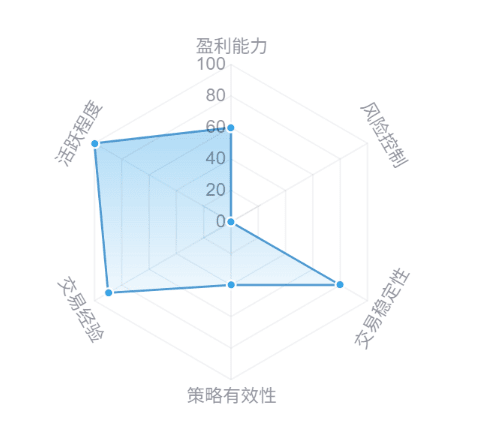
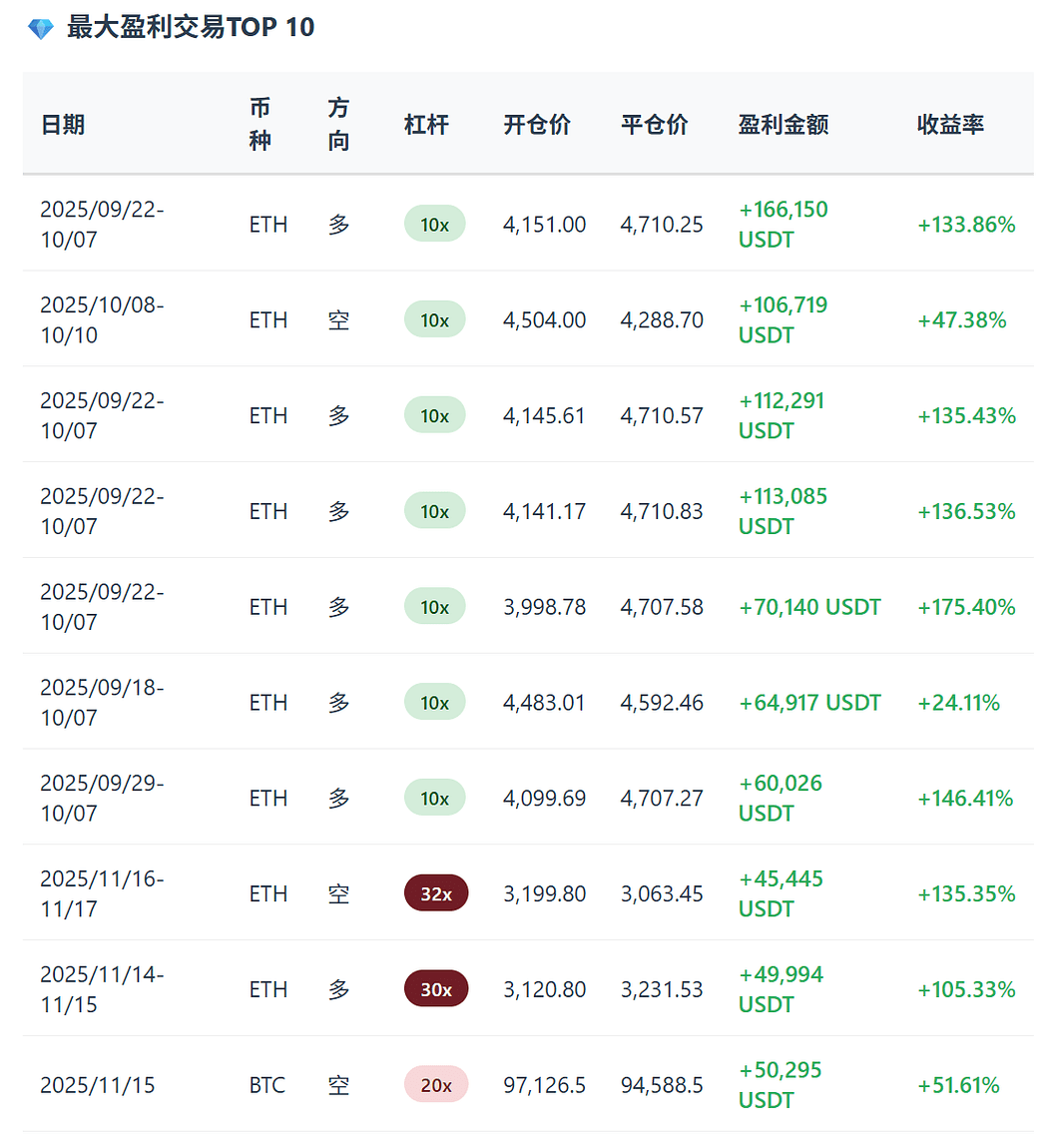
Before criticizing this trader's failure, we must acknowledge one fact: he does have excellent profitability. From the data of the top 10 most profitable trades, it can be seen that he is not an incompetent gambler, but a truly skilled trader.
This trader's issue is not technical incompetence, but a collapsed mindset. His trading decisions under rational conditions are professional, reasonable, and effective. However, the most terrifying aspect of the financial market is that while skills can be learned, controlling one’s mindset is incredibly difficult. Once emotions spiral out of control, even the highest skills cannot save you.
Data shows that even in mid-November (already close to the edge of collapse), he was still able to make a single profitable trade of 50,000 USDT. The short position on ETH on November 16–17 used 32x leverage (which is already very dangerous) but still achieved a +135.35% return. This indicates that his technical analysis skills have always been there, but they were consumed by emotions and greed.
Late-night trading: the main culprit of 60% losses
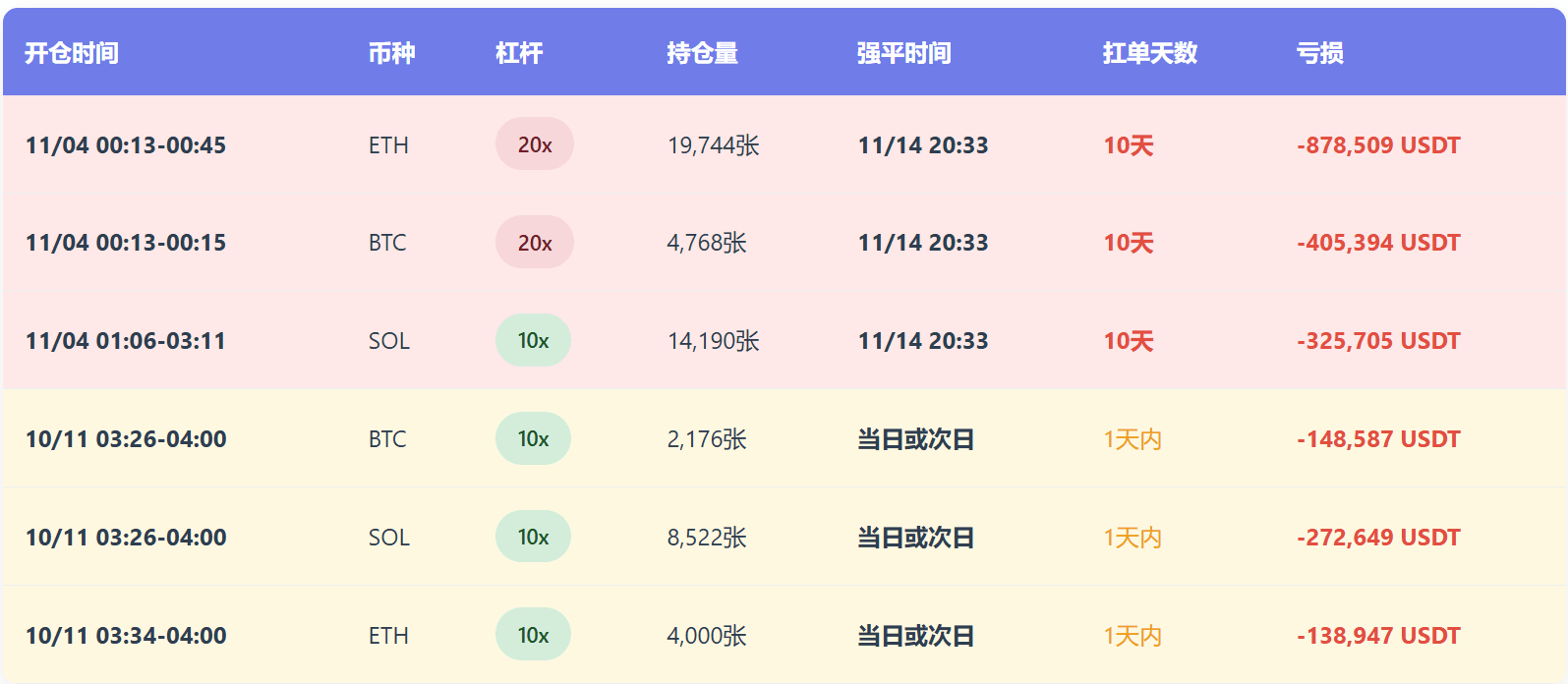
In the early morning of November 4: the craziest 32 minutes

Let us meticulously reconstruct the fatal 32 minutes from 0:13 to 0:45 on November 4, 2025. This is the craziest, most unbelievable moment in the entire tragedy.
0:13–0:15 (within 2 minutes): He opened positions in both ETH and BTC, both using 20x leverage. ETH opened 19,744 contracts, BTC opened 4,768 contracts. In these two minutes, he opened a risk exposure with a nominal value exceeding 11 million USDT.
0:15–0:45 (within 30 minutes): After confirming that ETH and BTC had started to decline, he did not stop loss, but continued to add.
1:06–3:11 (within 2 hours): Turned to SOL, continuously added positions of 14,190 contracts.
Fatal statistics of late-night trading
Accumulated losses: over 2 million USDT (2,169,791 USDT)
Proportion of total losses: over 60%
Opening period: 0:13–4:00 (weakest judgment period)
Total result: 100% forced liquidation, 0 active stop losses
Opened position on 11/04 and held for 10 days (11/04–11/14)
Consolidated liquidation time: 11/14 20:33:46 (one-time liquidation)
Why is late-night trading so dangerous?
Neuroscience explanation: From 0 to 6 AM is the lowest point of human physiological function. The activity of the prefrontal cortex (responsible for rational decision-making and impulse control) significantly decreases, while the activity of the amygdala (responsible for emotional responses) relatively increases. This means you are more likely to make emotional decisions and harder to control impulses.
Psychological explanation: Late-night trading is often due to being unable to sleep after losses during the day, wanting to 'do something' through trading. But the success rate of trades in this state is extremely low because you are not executing a plan but venting emotions.
Environmental factors: Late at night, there are no external constraints, no one can stop you, which makes impulses easier to translate into actions. If it were during the day, perhaps a friend's call could interrupt this madness. But at night, you are alone, your emotions are out of control.
Professional traders have a strict rule: never open new positions late at night.
Because decisions made late at night, 90% will regret upon waking the next day.
But for those who have already fallen into revenge trading,
Late-night instead became the 'best time' — a time to vent emotions.
This is why the largest liquidations always occur late at night
Disaster warning for followers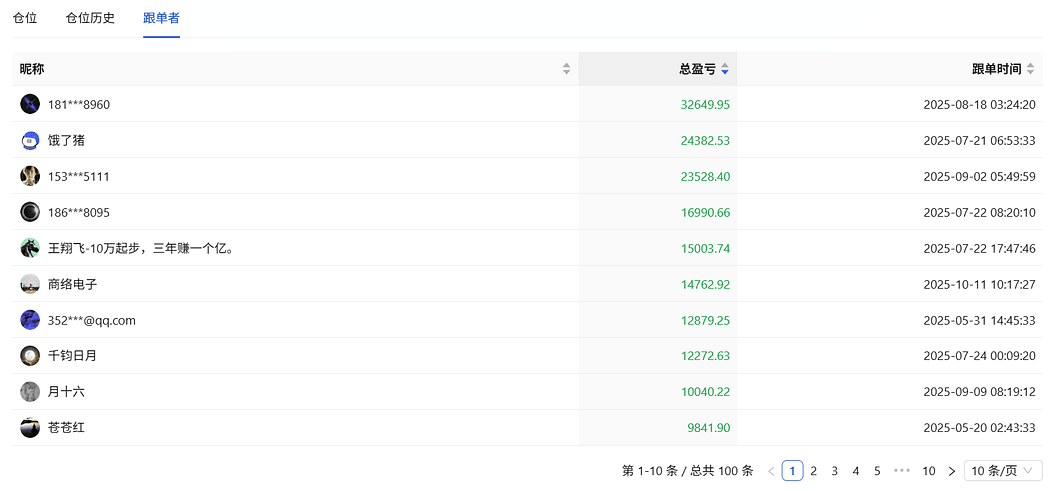
1,700 followers lost a total of 726,000 USDT, with an average loss of 427 USDT, but the actual results are far more terrifying.
1,700 followers lost a total of 726,000 USDT, with an average loss of 427 USDT, but the actual results are far more terrifying.
The profitability of the top 100 followers is about 200,000–300,000 USDT. The vast majority of them participated as early followers before September, making the accumulated losses for later followers possibly exceed 900,000–1,000,000 USDT. These individuals were attracted by the bright performance from September to October but became the worst bag holders. This reveals the cruel truth of following: the same trader, different entry times, drastically different outcomes.
How to identify danger signals in advance: avoid repeating mistakes
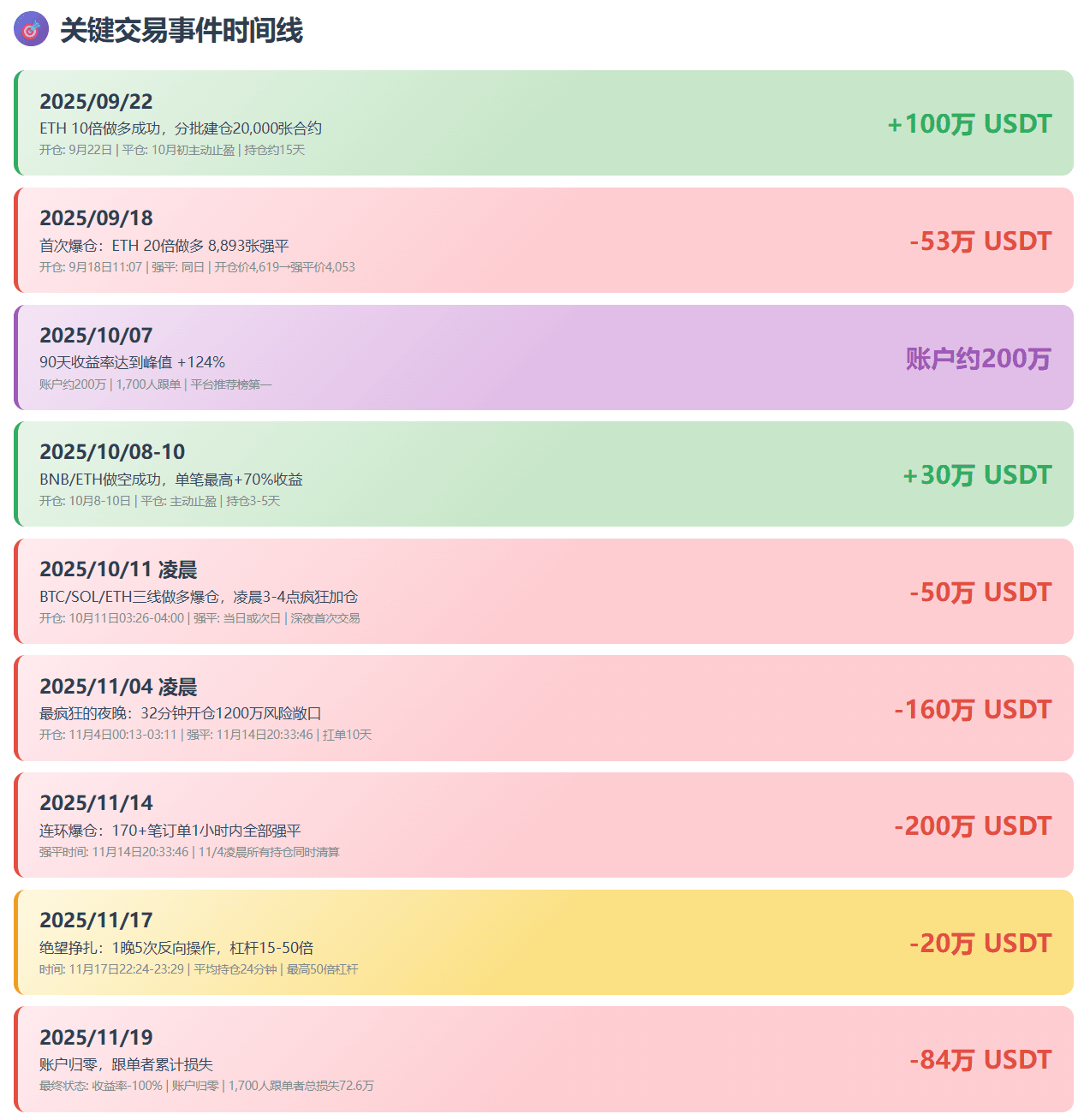
If we go back to early October, from the perspective of an ordinary follower, what signals could have provided early warning that this trader was about to collapse?
If we go back to early October, from the perspective of an ordinary follower, what signals could have provided early warning that this trader was about to collapse?
Three major golden indicators
1. Yield abnormal surge (+100% or more)
On October 7, the yield reached +124%. For ordinary followers, this looks like a 'great opportunity', but it is often the most dangerous signal.
The higher the yield, the greater the withdrawal risk
Short-term surges often come with excessive risk-taking
The mindset has shifted from 'steady profit' to 'aggressive gambling'
Most collapses occur after reaching historical highs
2. Increase in leverage
The trader used 10x leverage steadily at the beginning of September, but starting in October, 15x and 20x appeared, and in November, even 30x and 50x were seen.
Increased leverage = decreased risk tolerance
Wanting to use higher leverage to make up for losses or earn faster
A single fluctuation could lead to liquidation
3. Continuous forced liquidations (more than 3 times)
On September 18, the first liquidation - 530,000, on October 11, another liquidation - 500,000, continuous liquidations in November.
Forced liquidation = risk management failure
Lack of stop-loss awareness
Habit of 'holding positions' rather than 'stopping loss'
Luck-driven decision-making
Judgment criteria: If there are 2 instances of forced liquidation, reduce the following ratio; if there are more than 3, exit immediately.
Protecting your principal is always more important than pursuing profits. When you see danger signals like late-night trading, soaring leverage, and consecutive liquidations, it's never too early to exit. Because in the financial market, surviving is more important than anything else.
Data source: VERISCOPE platform | Statistical time: 2025/08/22–2025/11/22 | Analysis based on 329 real trading records


